History of Opera music – milestones, works, composers and main events
Contents History of Opera (Click to open epoch)
What were the most important eras of opera music?
1597 – 1700 The Beginnings of Opera (Italy) Monteverdi, Purcell.
1670 – 1750 Tragédie lyrique (France) Rameau, Lully.
1700 – 1790 Opera seria (Italy, Europe), Handel, Gluck, Mozart.
1700 – 1790 Opera buffa (Italy) Paisiello, Cimarosa.
1780 – 1850 Singspiel (Germany, Austria) Mozart, von Weber, Lortzing.
1792 – 1890 Opéra comique (France) Massenet, Auber, Bizet.
1800 – 1850 Belcanto (Italy) Rossini, Donizetti, Bellini.
1822 – 1870 Grand Opéra (Italy) Meyerbeer, Auber, Rossini.
1842 – 1889 Musical drama by Verdi and Wagner (Europe) Wagner, Verdi.
1890 – 1926 Verismo and Puccini (Italy) Puccini, Giordano, Cilea, Leoncavallo, Mascagni.
1902 – 1945 Late Romanticism and Modernism (Europe) Strauss, Berg, Debussy.
Part 1: The Beginnings of Opera
Teatro San Cassiano, Venice
Beginning and development
How and where did the art genre of opera originate?
Florence is generally considered the birthplace of modern opera. In the so-called Florentine Camerata (Camerata fiorentina), the elite of art and nobility met since the 1570s with the aim of reviving the art of antiquity. The main focus was on promoting the textual intelligibility of vocal music. The motto was: prima le parole, poi la musica (first the text, then the music). The music should adapt to the text and not obscure it. The goal was not elaborate melodies and gifted ideas, but a vocal style similar to speech (cantar recitando). From these efforts came the original form of opera. Jacopo Peri was its first creator.
It is thanks to the genius of Claudio Monteverdi that this rather dispassionate adaptation developed into a dramma per musica with flesh-and-blood people and brought the passions into the art form of opera (stile concitato). With L’incoronazione di Poppea he wrote the greatest masterpiece and the first opera with castrati in the leading roles.
Gradually, the art form reached other parts of Italy (Naples: Scarlatti) and northern Europe (Germany: Schütz, England: Purcell). In France, a French variant developed 70 years later, the tragédie lyrique.
What was new?
How was the beginning of opera different from the past period?
The dominant secular art form of the preceding 16th century was the madrigal, an elaborate, polyphonic vocal piece. Because of its elaborate counterpoint and polyphony (polyphony), text intelligibility was extremely poor. The Camerata wanted to overcome this flaw of the madrigal and create a new art form
Milestones
In which years did the beginnings of opera take place and what were the main milestones?
1576 Foundation of the Florentine Camerata
1598 The first opera: Dafne, by Jacopo Peri
1607 The first dramma per musica and masterpiece: Orfeo, by Claudio Monteverdi
1637 The first opera house, the Teatro San Cassiano in Venice,
163x New comic operas are written for the carnival season
1643 Castrati appear in leading roles: L’incoronazione di Poppea
1678 First opera house in Germany (Hamburg, Oper am Gänsemarkt)
1689 The greatest masterpiece of the early days outside Italy: Dido and Aeneas by Purcell
Style elements
What stylistic elements and techniques shaped the beginnings of opera?
Recitar cantando: Clear and text comprehensible voice, sparingly accompanied by basso continuo.
Ritornello: The solo sections are juxtaposed with contrasting choruses of the orchestra.
Monody: It is solo (monophonic) singing, chordally accompanied, high text intelligibility, opposite of polyphony (polyphonic).
Seconda pratica: the opposite of the polyphonic, traditional prima pratica. Monteverdi used the term seconda pratica for his text-comprehensible, passionate, dissonant arias.
Lamento: Expressive lament (see more: lamento).
Stile concitato: Monteverdi called passages composed in an excited style stile concitato.
Main works
What were the main works of the beginnings of opera?
1607 L’Orfeo (Monteverdi)
1640 Il ritorno d’Ulisse in patria (Monteverdi)
1642 L’incoronazione di Poppea (Monteverdi).
1683 Dido and Aeneas (Henry Purcell).
1692 The Fairy-Queen (Purcell)
Iconic pieces
What are iconic pieces of music from the early days of opera?
Pur ti miro, pur ti godo (L’incoronazione di Poppea)
When I lie in the earth(Dido and Aeneas)
Part 2: Tragédie lyrique
Jean-Pilippe Rameau, Jean-Baptiste Lully
Beginning and development
What is the tragédie lyrique, how and where did it originate?
Lully (1632-1687) is considered the founder of the tragédie lyrique and French opera. Born in Florence, he was taken to Paris as a 14-year-old garcon de chambre to a noble house. He was responsible for French opera taking a very different path than Italian (and later European) opera.
Lully was a talented musician and very good dancer when he met the 14-year-old future Sun King Louis XIV at the age of 20. Louis was also an enthusiastic dancer and a friendship developed between the two.
Because of Louis XIV’s high standards, the tragédie lyrique developed a comprehensive artistic ambition that required the expenditure of great resources to provide the court with a grand spectacle. Lully first composed popular comedies in collaboration with Molière and then, in collaboration with Quinault, the first operas, the so-called “tragédies lyrique,” in which chorus and ballet played an important role, but without castrati (as was customary in Italy at the time).
With the death of Lully, the art form ossified; only the genius of Rameau was able to revive the tragedie lyrique with the so-called Opéra Ballets and the virtuoso orchestral pieces that populated his operas. By 1750, however, the time had passed, and the controversy of the Buffonists and later the Piccinists established opera seria and the influence of Italian opera.”
What was new?
How did the beginnings of the tragédie lyrique differ from the previous period?
Lully deliberately turned away from early Italian opera, whose emphasis was on the aria and the recitative. He saw opera as a total art form of singing, chorus, dance, drama, orchestral music, and stage decoration. As a result, these elements took on more weight and became mandatory components (e.g., overture, ballet, stage effects, etc.). Rameau finally established ballet in French opera, which never played a role in Italian and German opera.
Historical performance of Alceste (Lully) in Versailles
Milestones
In which years did the tragédie lyrique take place and what were the main milestones?
1673 Lully writes the first Tragédie lyrique (Cadmus et Hermione)
1674 Lully writes the first masterpiece (Armide)
1687 Lully dies
1735 The most famous ballet opera Les Indes galantes (Rameau)
1750 The so-called Buffonist controversy between the supporters of Italian and French opera
Style elements
What stylistic elements and techniques shaped the tragédie lyrique?
French Overture: It consists of a fast middle section framed by heavy sections with dotted rhythms.
Ballet de cour, Ballet opéra: The ballet had great importance in this genre (Lully and Louis XIV: Ballet de cour). The climax was reached with the ballet interludes of Les Indes galantes (Ballet opéra) (Rameau).
Haut-contre: The abandonment of the castrati in the tragédie lyrique had developed the vocal range of a tenor with a high register.
Prosody: The art of reciting the word is highly valued in the solo interludes (mixture of recitative and aria).
Main works
What were the main works of tragédie lyrique?
Alceste (Jean-Baptiste Lully)
Armide (Jean-Baptiste Lully)
Les Indes galantes (Jean-Philippe Rameau)
Part 3: Opera seria
The castrato with its strikingly long limbs (caricature)
Beginning and development
What is opera seria, how and where did it originate?
130 years after the beginnings of opera, this art form had developed into scenic and musical arbitrariness. The fact that opera seria was able to develop into a powerful art form is (somewhat simplified) due to three men:
The German Händel established the castrati as primi uomini and the coloratura sopranos as prime donne. After three years of learning and traveling in Italy, he decided to seek his fortune in London – at his own risk. To make his opera house thrive, he used thestar principle (castrati and prima donnas) to attract the nobility and the wealthy to his theaters. Their weapon was the da capo aria, which allowed them to show off their virtuosity with coloratura, cadenzas, and ornamentation.
The Italian Metastasio reformed the poetry of opera seria and his libretti became blueprints. He purified the plot and established fixed formulas. His heroes were gods, knights, and nobles. No other librettist in the entire history of opera set more works to music. When he moved to Vienna, he also became influential for German-speaking Europe.
Thirty years after Handel, it was finally up to Gluck to reform opera seria and lead it to a silver flowering. With his so-called reform operas he domesticated the stars. No longer hollow affects, but noble feelings were to appeal to the opera-goer.
Mozart was the last great to write works for opera seria; he himself counted his Idomeneo among his greatest creations.
What was new?
How did the beginnings of opera seria differ from the past period?
Opera seria opened up to the bourgeois audience, thus music became more international and the star principle was invented. Virtuosity became the main thing and literature a secondary matter.
Milestones
In which years falls the period of opera seria and what were the main milestones?
1709 Handel writes his first and greatest opera seria masterpiece (Rinaldo) at the age of 24.
1722 The castrato Farinelli becomes the first megastar singer
1723 Beginning of Handel’s great operatic stardom in London with Cuzzoni (soprano) and Senesino (castrato).
1724 Metastasio writes his first libretto
1726 War of the Divas Cuzzoni and Bordoni at the Handel Opera in London
1730 Metastasio goes to Vienna
1735 Handel composes Semele, his last masterpiece in the genre of opera
1762 Gluck composes his reform opera Orfeo ed Euridice
1781 Mozart writes Idomeneo, his first masterpiece in the genre of opera
1791 The last masterpiece of opera seria: La clemenza di Tito by Mozart
Style elements
What stylistic elements and techniques characterize opera seria?
Da-capo aria: The da-capo aria (da-capo means repetition) is written in three parts A-B-A’. Usually the A’ part is embellished by the performer with coloratura, etc.
Coloratura: The ballet had great importance in this genre (Lully and Louis XIV: Ballet de cour). The climax was reached with the ballet interludes of Les Indes galantes (Ballet opéra, Rameau).
Castrato: A castrato is a male singing voice equivalent to that of a soprano or mezzo-soprano. The voice is produced by castration of the singer before puberty,
Senesino, Farinelli and Alessandro Moreschi (“the last castrato”).
Main works
What were the main works of opera seria?
1711 Rinaldo (Handel)
1724 Giulio Cesare (Handel)
1735 Alcina (Handel)
1744 Semele (Handel)
1762 Orfeo ed Euridice (Gluck)
1779 Iphigénie en Tauride (Gluck)
1781 Idomeneo (Mozart)
1791 La clemenza di Tito (Mozart)
Iconic pieces
What are iconic pieces of music of opera seria?
Venti turbini, Rinaldo (Handel).
Unis dès la plus tendre enfance Iphigénie en Tauride, (Gluck)
Fuor del mar ho un mar nel seno, Idomeneo (Mozart)
Part 4: Opera buffa
Beginning and development
What is opera buffa, how and where did it originate?
Opera buffa was the folk opera in the 18th century. It was based on the commedia dell’arte and was the antithesis of the aristocratic opera seria in Italy. The most famous work is La serva del padrone, a 50-minute piece by Paisiello that served as an intermezzo between two acts of an opera seria.
Although the works of opera buffo are almost extinct today, their influence was not insignificant.
Rossini’s comedies are inconceivable without opera buffa, and Mozart was also exposed to the influence of opera buffa via the Italian da Ponte (Don Giovanni, Le nozze di Figaro and Cosi fan tutte bear witness to this), even if as cross-over works they are not counted as part of the genre. Above all, the classical theme of the different status of opera buffa was of great importance to Mozart.
The Buffonist controversy in Paris between Italian and French opera was also sparked by Italian touring theaters of opera buffa. Rousseau in particular addressed the “naturalness” of Italian opera in contrast to the “artificiality” of tragédie lyrique.
What was new?
How did the beginnings of opera buffa differ from the past period?
With the rise of the aristocratic opera seria, popular opera had lost its place. Based on commedia dell’arte, it was reinvented as 0pera buffa in the marketplaces and later in theaters. The music is simplified and the dialogues are sparsely punctuated, sometimes written in dialect. In contrast to the mythological world of opera seria, everyday themes and class distinctions form the plots.
Commedia dell’arte in Piazza San Marco, Venice 1615
Milestones
What were the years of opera buffa and what were the main milestones?
1724 Paisiello composes la serva padrone as an intermezzo
1752 Buffonist controversy in Paris
1792 Cimarosa composes il matrimonio segreto, the last important work
Style
What style elements and techniques characterize opera buffa?
Parlando: fast singing with well-articulated pronunciation and easy intonation, paying attention to rhythm.
Intermezzo: Interlude between two acts of an opera seria.
Castrato: A castrato is a male singing voice equivalent to that of a soprano or mezzo-soprano. The voice is produced by castration of the singer before puberty.
Main Works
What were the main works of opera buffa?
1724 La serva padrone (Paisiello) composed as Intermezzo
1792 Il matrimonio segreto (Cimarosa)
Iconic pieces
What are iconic pieces of music of opera seria?
Lo conosco a quegli occhietti, (La serva padrone)
Part 5: Singspiel and early German Romanticism (Biedermeier)
Carl Spitzweg, Der Sonntagsspaziergang (The sunday walk)
Beginning and development
What is the singing game, how and where did it originate?
The popular Singspiel has existed in the German-speaking world since the beginning of the 18th century. When the Austrian emperor began to promote the Singspiel as a counterweight to Italian opera, an elaborate genre developed that attracted the best German-speaking composers. In this way, he opened the opera house to musical theater with spoken dialogue and songs (folk songs).
Mozart wrote Die Entführung aus dem Serail, the first masterpiece to which the emperor had personally invited him. Less than 10 years later, Mozart had The Magic Flute follow.
Fidelio is also classified as a Singspiel, although strictly speaking this applies only to the first part. With the advent of German early Romanticism (the Biedermeier period) came the great age of the Singspiel. Weber’s Freischütz inspired a whole generation of composers, and with Die lustigen Weiber von Windsor the Singspiel found a worthy final climax.
What was new?
How were the beginnings of singspiel different from the past time?
Schinkel: Sketch for the stage design of Die Zauberflöte (1816)
Milestones
What were the years of singing and what were the main milestones?
1766 Emperor Joseph II declares the Burgtheater in Vienna to be the venue for the German Singspiel
1782 Emperor Joseph personally commissions Mozart to compose The Abduction from the Seraglio
1811 World premiere of Der Freischütz
1849 The last masterpiece of Singspiel (The Merry Wives of Windsor)
Style elements
What are the stylistic elements and techniques that characterize singspiel?
Song: Solo piece with simple melodies and chorus.
Main works
What were the main works of singspiel?
1782 The Abduction from the Seraglio (Mozart)
1791 The Magic Flute (Mozart)
1805 Fidelio (Beethoven)
1811 Der Freischütz (by Weber)
1837 Tsar and Carpenter (Lortzing)
1849 The Merry Wives of Windsor (Nicolai)
Iconic pieces
What are iconic musical pieces of singspiel?
Der Vogelsänger bin ich ja (Magic Flute)
Der Hölle Rache (Magic Flute)
Wolfsschlucht Scene (Der Freischütz)
Durch die Wälder durch die Auen (Der Freischütz)
Leise, leise von meiner Weise (Der Freischütz)
Horch, die Lerche singt im Hain (The Merry Wives of Windsor)
Part 6: Belcanto
Gioacchino Rossini, Vincenzo Bellini and Gateano Donizetti
Beginning and development
What is bel canto, how and where did it originate?
Belcanto describes an Italian singing technique before 1900 that includes purity and delicacy of tone, flow (legato), singing with the breath (canto sul fiato) and further dynamic flexibility (messa di voce) and agility in ornamentation. Famous (classical) bel canto composers were Donizetti, Bellini and Rossini, but Verdi also composed mostly in the bel canto style.
This bel canto style was perfected by the castrati in the 18th century (see chapter Opera seria). In these sections, we speak of classical bel canto, which from 1800 is associated mainly with Donizetti, Bellini and Rossini, and is considered the peak of bel canto culture. Verdi also composed predominantly in the bel canto style, but in terms of music history he can be assigned to the High Romantic period.
In the era of classical bel canto, the star was no longer the castrato, but the coloratura (mezzo) soprano. The composers of bel canto wrote arias into the throat of the prima donna, who thus entered history. Names such as Isabella Colbran (at times the wife of Rossini), Giuditta Pasta (at times the mistress of Bellini) and Giuditta Grisi are still associated with the works of the three greats.
Alongside Naples, Rome and Milan, Paris developed into an international opera center. All three great Italian bel canto composers moved to Paris and wrote their late works for the French capital (e.g. Guillaume Tell, Don Pasquale, I puritani).
The breakthrough came in the early thirties. The tenore di grazia (lyric tenor) and coloratura soprano of the bel canto era were replaced by the dramatic spinto tenor and the dramatic mezzo-soprano. In the great theaters (Grand Opera, La Fenice, La Scale, etc.), the penetrating power of the voice and dramatic potential became the most important criteria for composers such as Verdi and Wagner.
What was new?
How was bel canto different from the past period?
The distinction between opera buffa and opera seria of the 18th century was abolished. In the bel canto style, composers served both genres equally. The aria was through-composed (the liberties of the da capo aria disappeared) and the beautiful melody became the standard. For composers were no longer employees of princes, but employees of impresarios who wanted to fill their theaters
Milestones
What were the years of bel canto and what were the main milestones?
1813 Barbaja, the first modern theater impresario, transforms the Neapolitan opera house San Carlo into a gambling casino. Rossini becomes artistic director and is expected to attract guests with music. 1815 Rossini reinvents operatic comedy with L’Italiana in Algeri; the coloratura soprano becomes a star.
1815 Rossini composes Il barbiere di Siviglia, the musical comedy par excellence.
1829 Rossini writes his last opera, Guillaume Tell, and falls silent at the age of 37.
1831 In the premiere of La Sonnambula, Battista Rubini and Giuditta Pasta form the romantic lovers. Bellini followed up a little later with Norma, writing the major work of the bel canto era.
1835 Donizetti writes the mad scene of Lucia di Lammermoor, an iconic piece of opera literature that influenced an entire generation of composers.
1837 French tenor Duprez sings the high C in Guillaume Tell from the chest (rather than in head voice), ushering in the era of the dramatic tenor.
Style elements
What style elements and techniques characterize opera buffa?
coloratura: In opera music, coloratura refers to a passage that requires special agility, especially in the high register. This includes, above all, the singing of long sequences of notes with trills and other ornamentation.
Melody with coloratura ornaments, from: Casta diva (Norma)
Main works
What were the main works of bel canto?
1813 L’italiana in Algeri (Rossini)
1813 Tancredi (Rossini)
1816 Il barbiere di Siviglia (Rossini)
1829 Guillaume Tell (Rossini)
1831 La sonnambula (Bellini)
1831 Norma (Bellini)
1832 L’elisir d’amore (Donizetti)
1835 I puritani (Bellini)
1835 Lucia di Lammermoor (Donizetti)
1840 La fille du régiment (Donizetti)
1843 Don Pasquale (Donizetti)
Iconic pieces
What are iconic pieces of bel canto music?
Mira o Norma (Norma)
Casta Diva (Norma)
Il dolce suono (Lucia di Lammermoor)
Una furtiva lagrima (L’Elisir d’amore)
Largo al factotum (Il barbiere di Siviglia)
Asile héréditaire Italian: o muto asil del pianto (Guillaume Tell)
Naqui all’affanno … non più mesta (Cenerentola)
Part 7: Opéra comique
Beginning and development
What is the Opéra comique, how and where did it originate?
The term “Opéra Comique” is somewhat misleading. It was invented in the early 18th century to distinguish the Opéra Comique from the Tragédie lyrique with its gods and nobles in the leading roles. The latter also had a comedic core (e.g., the Vaudevilles), but the tide turned and the opéra comique turned to a new, artistically superior opéra comique. The birth of the “classical” opéra comique occurred 3 years after the French Revolution.
Napoleon personally defined the genre of opéra comique by decree: “comedy or drama mixed with verse, ariettes or ensemble pieces (comédie ou drame mêlés de couplets, d’ariettes ou de morceaux d’ensemble). ”
It became the opera of the bourgeoisie and the people, and the most important stylistic element was spoken dialogues (instead of recitatives with musical accompaniment). The spectrum ranged from comedies to dramas with a maximum of three acts. The first masterpiece was the opera Frau Diavolo by Auber.
Eugène Scribe and his writing workshop became the most important source for libretti, of which almost 500 were written. Scribe combined above all sentimental intrigue with bourgeois conventions, patriotism and satire on his contemporaries.
From 1850, the distinction from the Grand Opéra began to blur, and the greatest works of the genre were produced (Carmen, Les contes d’Hoffmann, Faust, Manon). They were all works tailored to the conventions of the Opéra Comique.
The term “Opéra Comique” refers not only to a genre, but also to a place in Paris and has remained a French institution to this day. Today’s Opéra comique (also known in Paris as Salle Favart) is a beautiful historic theater and dates back to 1898. Its two predecessor theaters burned down, including the premiere theater of “Carmen”; the fire occurred in 1887 and claimed the lives of about 100 people.
What was new?
How did the beginnings of the opéra comique differ from the past period?
The opéra comique was very different from the bombastic, five-act tragédie lyrique. The main forms of opéra comique included: the use of the French language, 3 acts, spoken dialogue, realistic (i.e., not mythological, etc.) themes. Recitatives were later composed for many operas to adapt them for other opera houses (e.g., Carmen).
Milestones
What were the years of the Opéra Comique and what were the main milestones?
1793 Napoléon Bonaparte orders the new Opéra comique
1797 World premiere of the main work of the so-called rescue opera, Médée by Cherubini
1830 Fra Diavolo by Auber appears, Eugene Scribe is the librettist
1840 Donizetti conquers the opéra comique with La fille du régiment
1850 Opening up to drama: the Opéra comique becomes the “little Grand Opéra”.
1850 The comedic genre is no longer part of the Opéra comique and turns to operetta
1875 The opera Carmen provokes a theatrical scandal at the Opéra comique
1887 Fire of the second Salle Favart during a performance, causing 100 deaths
Salle Favart burns down, Paris 1887
Style elements
What stylistic elements and techniques shaped the opéra comique?
Couplet: The term comes from French opera. A couplet is a multi-strophic, joyful song with a distinctive refrain in the manner of a rondo, with a recurring refrain. An example is Chacun le sait, chacun le dit from the opera La fille du régiment.
Rescue opera: The rescue opera (comédie héroique) became popular after the Revolution. “Rescue from adversity” combined with a love story is the scheme of its plot, the most famous works are Medée (Cherubini) and the Singspiel Fidelio (Beethoven).
The main forms of opéra comique include: the use of the French language, 3 acts, spoken dialogue, realistic (i.e., not mythological, etc.) themes.
Main works
What were the main works of the opéra comique?
1797 Medea (Cherubini)
1826 Fra Diavolo (Auber)
1840 La fille du régiment (Donizetti)
1859 Faust (Gounod)
1875 Carmen (Bizet)
1881 Les contes d’Hoffmann (Offenbach)
1884 Manon (Massenet)
Iconic pieces
What are iconic pieces of music from the Opéra comique?
Salut la France (La fille du regiment)
L’amour est un oiseau rebelle (Carmen)
Ah, fuyez douce images (Faust)
Les oiseaux de la charmille (Les contes d’Hoffmann)
Part 8: Grand Opéra
Giacomo Meyerbeer, Daniel Auber, Gioacchino Rossini
Beginning and development
What is the Grand Opéra, how and where was it created?
Grand Opéra (French) is the name given to a genre of opera that emerged in Paris after the French Revolution. The Grand Opéra built on the traditions of Gluck’s reform opera and the Opéra Comique.
Rossini’s “Guillaume Tell” (1829), together with Auber’s “Muette de Portici” (1828) and Meyerbeer’s “Robert le diable” (1831), formed the prototype of this new type of stately opera with historicizing themes that claimed to combine the art genres of music, literature, dance, decoration, and painting. Specialized committees for each art genre took care of working out the details, and endless rehearsals uncovered weaknesses that in turn led to changes in the composition.
The Grand Opéra productions required artists to create historical material with authentic color. For the production of Rossini’s Guillaume Tell, for example, the set designer Cicéri was sent to central Switzerland, where he made sketches for the sets.
The piece was performed in its heyday in the Salle Pelletier, which fell victim to a fire in 1873. Grand Opéra works havefive acts and include an extended ballet. The operas were elaborately planned and staged at gigantic expense. For example, 355 costumes had to be sewn for Don Carlo, which was performed during the Paris World’s Fair in 1867.
Giacomo Meyerbeer is considered the most successful composer of the Grand Opéra. Richard Wagner tried for many years to succeed with the Grand Opéra, but failed with his Tannhäuser in a fiasco that went down in history. Most works of this genre are rarely performed today because of the gigantic cost (e.g. Les Huguenots or L’Africaine).
What was new?
How was the Grand Opéra different from the past era?
The Grand Opéra adopted the grand unfolding and many forms of the tragédie lyrique, but opened up to the middle-class audience with historicizing themes and catchier music.
Salle Pelletier, Paris
Milestones
What were the years of the Grand Opéra and what were the main milestones?
1828 La muette de portici is performed as the first work of the Grand Opéra in the Salle Pelletier
1829 Rossini composes Guillaume Tell for the Grand Opéra
1830 Meyerbeer conquers the Grand Opéra with Robert le diable and dominates it for the next 20 years
1855 Verdi also turns to grand opera with Vepres siciliennes and later Don Carlo
1865 Meyerbeer writes his last opera (L’Africaine)
1873 The Salle Pelletier burns down and the Palais Garnier becomes the new venue, but decline sets in
Main works
What were the most important works of the Grand Opéra?
1828 La muette de portici (Auber)
1829 Guillaume Tell (Rossini)
1830 Robert le diable (Meyerbeer)
1835 La Juive (Halévy)
1836 Les Huguénots (Meyerbeer)
1865 Don Carlos (Verdi)
Iconic pieces
What are iconic pieces of music from the Grand Opéra?
Part 9: Music Drama – Verdi and Wagner
Giuseppe Verdi and Richard Wagner
Beginning and development
What is the music of Verdi's and Wagner's music dramas, how and where were they created?
Verdi:
When Verdi wrote his first masterpiece, Rossini had already fallen silent, Bellini had died and Donizetti was still granted a few years. Verdi’s main task now was to dramatize the music of bel canto. The singers’ roles became more dramatic, the choruses more important, and the music harder. Nabucco was the blueprint for this new style; never had Verdi composed louder and more warlike.
Verdi always took a strategic approach to his compositions. Before the composition process, he defined the musical style of the opera. Each work from Nabucco on was now to have its own fingerprint. He called it Tinta musicale.
He consistently pursued the path of drama and wrote his first musical dramas with Macbeth and Simon Boccanegra. But this did not prevent Verdi from repeatedly writing classical number operas, especially the triologia popolare of his galley years (Il trovatore, La Traviata and Rigoletto), and his late work Aida was also a number opera.
He was a genius and a hard worker. Twenty of his works are still regularly performed in theaters and form the backbone of the opera repertoire. Verdi revolutionized the relationship between impresario and composer. He enforced that the exploitation rights remain with the composer and that the composer no longer has to constantly produce works.
The last two works (Otello, Falstaff) became through-composed musical dramas par excellence, which he composed after works by his favorite playwright Shakespeare.
Wagner:
Wagner’s starting point was the Singspiel; he himself cited Fidelio, which he had seen as a 16-year-old starring Schröder Devrient, and Freischütz as the basis of his opera.
The influence of grand opera and bel canto should not be underestimated; Wagner appreciated Bellini’s music, which he became thoroughly acquainted with as a conductor. Even Lohengrin, which he wrote at the age of 37, still breathes the Italian vocal art. But with Der fliegende Holländer he had irrevocably taken the path of drama, which he consistently developed until he landed there with Tristan und Isolde.
The backbone of his drama were the highly dramatic soprano (Brünnhilde, Isolde) and the hero tenor roles (Siegfried, Tristan, Tannhäuser). The demands on the singers were so high that it took Wagner six years to find singers for his opera Tristan und Isolde. He found the longed-for Tristan in the tenor Ludwig Schnorr von Carolsfeld. Schnorr delighted the audience at the premiere in Munich, but died eight days after the fourth performance at the young age of 29. He had sung the fourth performance ill and, according to popular opinion, died from the murderous role.
More and more, leading motives became the dominant compositional principle, until in the Ring they became the narrative design principle. With Wagner, the orchestra experienced an unheard-of richness of color, and his overtures, transformation music, and new harmonies inspired several generations of composers (see also: Tristan chord).
His life’s work is undeniably gigantic; in addition to his greatness as a musician, he was also his own librettist. He crowned his life’s work with his own theater and festival in Bayreuth, which continues to this day. With the Ring, musical drama became a complete work of art.
No musician before or after him had as much influence on his successors as Richard Wagner. Mahler, Strauss, Puccini, Korngold, Leoncavallo, Debussy and Humperdinck all invoked the master.
Auditorium of the Festspielhaus Bayreuth
What was new?
How was the era of music drama different from the past period?
Music became more dramatic and new voice types emerged: the dramatic soprano, the spinto tenor, the heroic tenor, and the highly dramatic soprano (high dramatic).
The orchestra and chorus gained in importance and color and became figures in their own right. The drama developed out of the Belcantist number opera.
Milestones
What were the years of Verdi and Wagner music drama and what were the main milestones?
1842 Verdi has success with Nabucco, his first masterpiece
1843 Wagner has success with Der fliegende Holländer, his first masterpiece
1850 Wagner begins work on the Ring, which lasts 25 years
1847 Verdi writes his first musical drama, Macbeth.
1851 Verdi writes Rigoletto, the first work of the triologia popolare
1865 With Tristan and Isolde, Wagner changes the European musical landscape forever
1876 First performance of the Ring des Nibelungen in Bayreuth
1882 World premiere of Parsifal in Bayreuth, which remains the only performance venue for this opera for the next 30 years.
1887 The 74-year-old Verdi writes his most important music-dramatic work, Otello
Style elements
What stylistic elements and techniques shaped the musical drama of Verdi and Wagner?
Musical drama : The music is no longer divided into scenes and numbers (“number opera”), but the scenes form an inseparable unit. Characteristically, the scenes and their music are through-composed, without interruptions such as tercets, finales, recitatives, etc.).
Hochdramatische (Heldentenor): Heroic tenor. Tenor voice with radiant power in the dramatic vocal range. The physical demands on the singer are immense. The duration of the opera is usually very long and the accompaniment by the orchestra is loud and dense. Tannhäuser is probably the most difficult Heldentenor part.
Highly dramatic soprano: The high dramatic soprano is the female counterpart of the Heldentenor. It is a soprano voice with radiant power. It must also sing roles with extreme emotional outbursts. Typical roles are Salome (Strauss), Elektra (Elektra), Brünnhilde (Götterdämmerung) and Isolde (Tristan und Isolde).
Leitmotiv: artistic device that is used repeatedly as a musical motif in a work.
Spinto tenor: a somewhat heavier tenor voice. It lies between the lyric tenor and the heroic tenor. The spinto tenor voice is powerful and brilliant in the high notes. Verdi’s tenor roles are usually spinto roles (Manrico, Riccardo, Radames, etc.).
The Spinto Tenor: Otello (Mario del Monaco as Otello)
Main works
What were the main works of music drama by Verdi and Wagner?
1847 Nabucco (Verdi)
1847 Macbeth (Verdi)
1853 La Traviata (Verdi)
1851 Rigoletto (Verdi)
1871 Aida (Verdi)
1887 Otello (Verdi)
1850 Lohengrin (Wagner)
1865 Tristan and Isolde (Wagner)
1868 The Mastersingers of Nuremberg (Wagner)
Div. The Ring of the Nibelung (Wagner)
1882 Parsifal (Wagner)
Iconic pieces
What are iconic pieces of music drama by Verdi and Wagner?
Va pensiero (Nabucco)
Di quella pira (Il Trovatore)
Bella figlia d’amore (Rigoletto)
Vieni! t’affretta accendere… Or tutti sorgete (Macbeth)
In fernem Land(Lohengrin)
Mild und leise (Tristan and Isolde)
Ride of the Valkyries (The Valkyrie)
10. Verismo and Puccini
Ruggero Leoncavallo, Pietro Mascagni, Giacomo Puccini, Umberto Giordano
The Age of Verismo and Puccini
What is the music of Verismo and Puccini, how and where did they originate?
Verismo:
Verismo is the Italian counterpart to the late Romanticism of the late 19th century in the northern part of Europe. Mascagni’s Cavalleria rusticana was the first musical work of this style and became the model for verismo.
The genre of verismo combined realistic theater with raw, emotional music. To achieve the greatest possible effect, the music sought to express fierce passions and intense emotions. It was meant to touch the listener’s heart and appeal to his sensitive side. The “artificial”, embellished bel canto sound was abandoned in favor of dramatic vocal lines.
There is no formal definition of verismo, but in the second major work of verismo, Pagliaccio, composer Leoncavallo has Tonio say a characteristic phrase in the prologue: the people on stage are “flesh and blood” – the text of the prologue became the program of verismo.
The Milanese publisher Edoardo Sonzogno is considered to be the midwife of verismo. In order to promote new talent, he several times announced composition competitions for one-act operas. Already from the second edition Mascagni emerged as the winner with Cavalleria rusticana. Sonzogno became the publisher of the veristas.
Puccini:
Puccini was the last romantic in the history of opera and became the creator of great emotions in the form of unforgettable female characters such as Butterfly, Mimi or Tosca. He drew his life energy and his professional work to a large extent from the great feelings of passion, which he sought in his real life in the many loves.
His orchestral language is immensely colorful, his orchestral scenes from La bohème (barrière d’enfer, street scene in front of the Domus restaurant) or Turandot (crowd scenes) become late romantic masterpieces.
Like Verdi, Puccini gave each opera its own signature, and he constantly developed his style. He came closest to verismo in Tosca, closest to late romanticism in Turandot.
Like Verdi, he always remained committed to melody, and he wrote an astonishing number of immortal hits.
What was new?
How was the era of verismo and Puccini different from the previous era?
With verismo, the foundation of bel canto vocal technique was partially abandoned. Emotional outbursts and violence demanded a new style of singing. Realism had the scenes set in the socially lower milieu, and the language and stylistic devices became sharper. The sobbing of the pagliaccio (Vesti la giubba) became the iconic gesture of verismo.
Plácido Domingo in “Vesti la giubba” (Pagliacci)
Milestones
What were the years of Verismo and what were the main milestones?
1881 Ramon Varga inspires musicians with his first verismo novel.
1883 Sonzogno launches the first composers’ competition for one-act operas.
1890 Mascagni wins the second Sonzogno competition with Cavalleria rusticana (based on a novel by Varga). The premiere becomes one of the greatest triumphs in opera history. The one-act opera becomes the blueprint of musical verismo.
1893 Puccini achieves his breakthrough with Manon Lescaut.
1896 Umberto Giordano becomes suddenly famous as a completely unknown musician with his masterpiece “Andréa Chenier”.
1904 The first gramophone recordings by Enrico Caruso appear. His “Vesti la giubba” (Pagliacci) becomes the recording industry’s first million-dollar hit.
1910 Puccini had turned his attention to the United States, and for the first time in opera history a premiere of a major work takes place in the United States (La fanciulla del West).
1921 Puccini dies, his last opera Turandot is performed posthumously
Stylistic elements of verismo
What stylistic elements and techniques shaped verismo?
Intermezzo: Intermezzo music that became an iconic piece of veristic opera. 3 Intermezzi became world famous (Cavalleria rusticana, Pagliaccio, Manon Lescaut). Dramaturgically, they often served as a prelude to climatic catastrophe.
One-act opera: Only one-act operas were admitted to the Sonzogno composers’ competition. This is how this type came into fashion in Italy. Puccini composed three one-act operas in his Tryptiche.
Main works
What were the main works of verismo?
1890 Cavalleria rusticana (Mascagni)
1892 Pagliacci (Leoncavallo)
1896 Andrea Chénier (Giordano).
1926 Tosca (Puccini)
1902 Adriana Lecouvreur (Cilea).
1926 Turandot (Puccini)
Iconic pieces
What are iconic pieces of verismo?
Vesti la giubba (Pagliacci)
Intermezzo (Cavalleria rusticana)
Vicino a te (Andrea Chénier)
E lucevan le stelle (Tosca)
Nessun dorma (Turandot)
10. Late Romanticism, Expressionism, and Modernism
.
Richard Strauss, Alban Berg, Claude Debussy
The Age of Late Romanticism and Modernism
What is the music of the era of late romanticism and modernism, how and where did it originate?
Late Romanticism:
An important feature was the significant enlargement of the orchestra. Additional instruments such as the celesta brought new colors to the orchestra. The tonality was expanded, inspired by the exemplary Tristan harmony, but the music remained tonal. The orchestral writing became more complex with an enormous density of motives, more complex rhythms and harmonies.
Modernism / Expressionism:
Modernism used the means of polytonality and atonality. Significantly, Berg had a clear idea of how singers were to sing; his instructions were: “By no means sing! But nevertheless the pitch is to be indicated and notated in the singing voice (exactly according to the notes); the latter, however, with speech resonance.”
What was new?
How did the Late Romantic and Modern eras differ from the previous era?
Polytonality, dissonance and atonality replaced melody as the predominant stylistic device.
In the age of modernism, the vocal art of bel canto was finally passé, and the singing voice approached the speaking voice.
Birgit Nilsson as Elektra
Milestones
What were the years of late romanticism and modernism and what were the main milestones?
1902 World premiere of Pelléas et Mélisande
1905 World premiere of Salomé, Strauss becomes an avant-garde composer
1909 World premiere of Elektra, the first work of modernism
1909 Schönberg writes the one-act opera Erwartung, the first atonal opera
1911 Strauss becomes surprisingly conservative with Der Rosenkavalier
1920 World premiere of Die tote Stadt by Korngold
1925 World premiere of Wozzeck
1934 Korngold emigrates to Hollywood and inspires the film industry with the late romantic musical language
1949 Death of Richard Strauss
Stylistic elements of late romanticism and modernism
What stylistic elements and techniques shaped late romanticism and modernism?
Orchestral sounds: In Salome, Strauss composed for an orchestra of over 100 musicians. A fifteen-piece brass section as well as orchestral instruments that were unusual at the time, such as celesta, harmonium and organ, provide characteristic timbres.
Atonality: Music whose harmonies and melodies are not fixed to a tonal center or keynote.
Main works
What were the main works of modernism and late romanticism?
1902 Pelléas et Mélisande (Debussy)
1905 Salome (Strauss)
1909 Elektra (Strauss)
1911 Rosenkavalier (Strauss)
1920 The Dead City (Korngold)
1925 Wozzeck (Berg)
1937 Lulu (Berg)
Iconic pieces
What are iconic works of modernism and late romanticism?
Mir ist die Ehre widerfahren (Rosenkavalier)
Ach, du wolltest mich nicht Deinen Mund küssen lassen (Salome)
Ob ich nicht höre (Elektra)
Langsam, Wozzeck, langsam (Wozzeck).

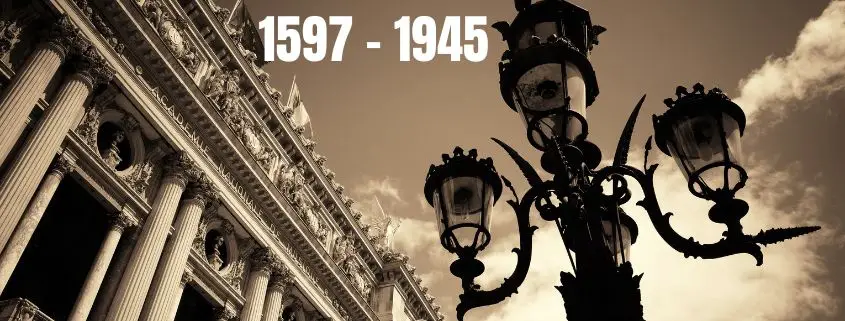
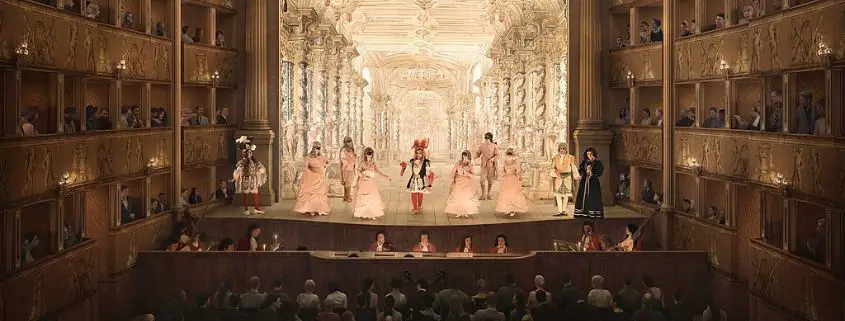
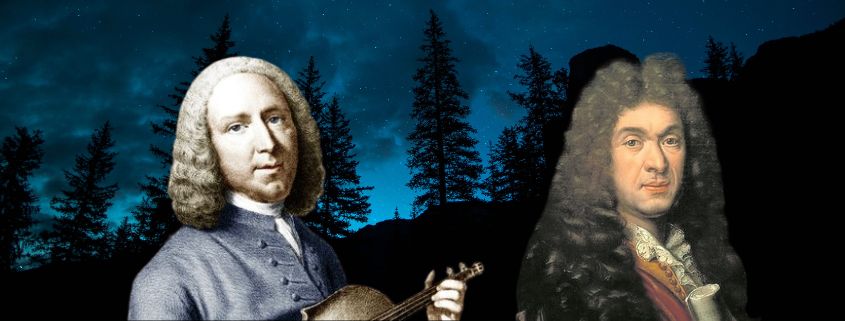

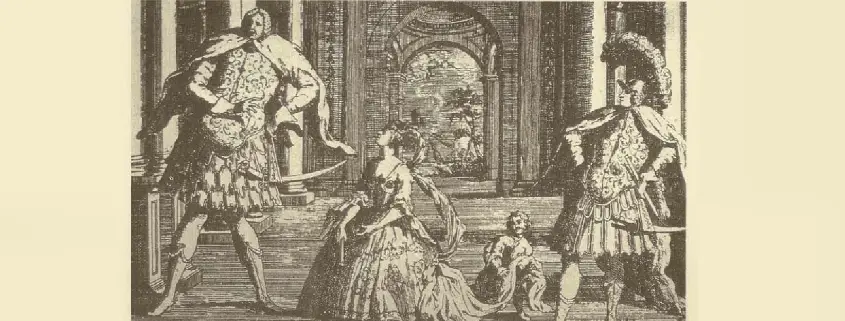
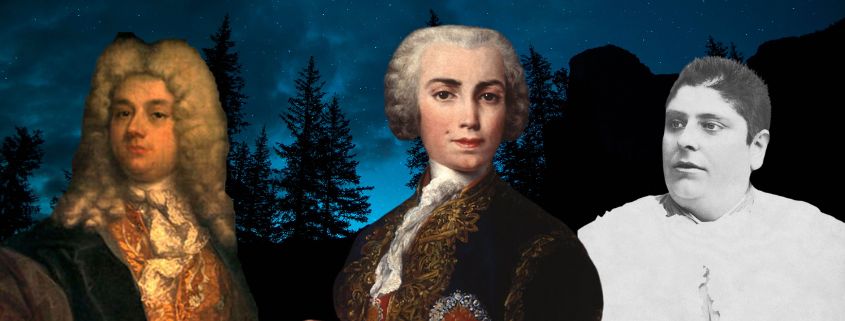
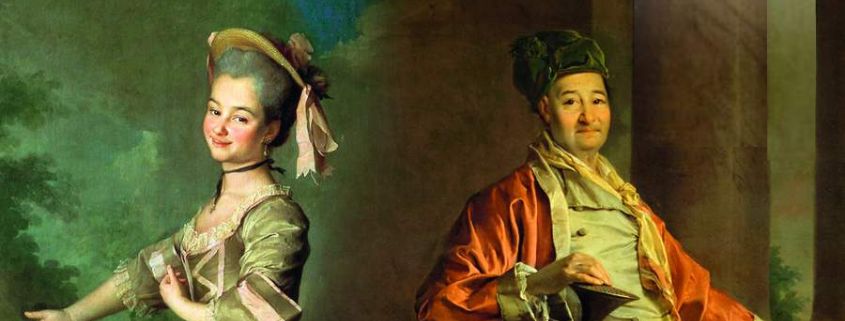
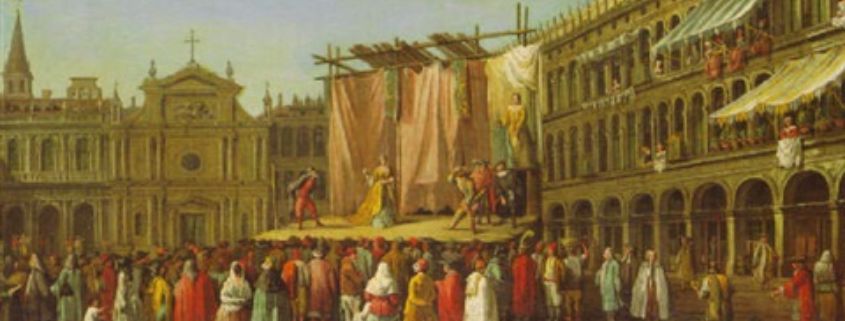
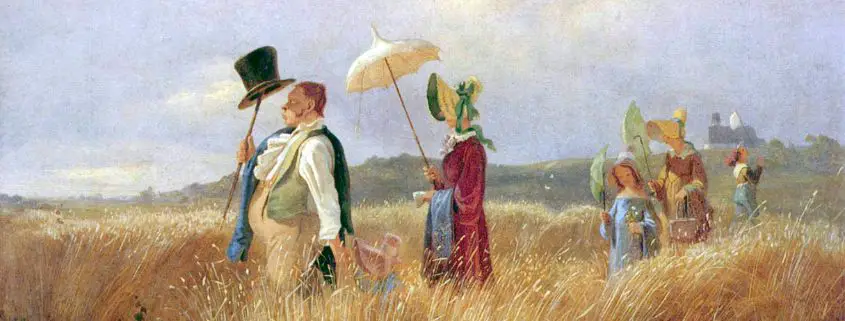
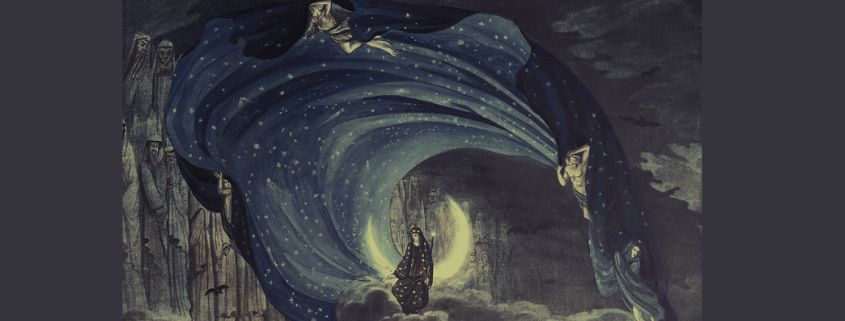
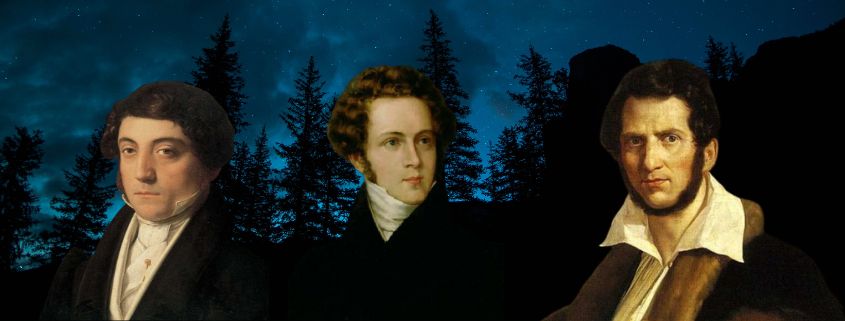
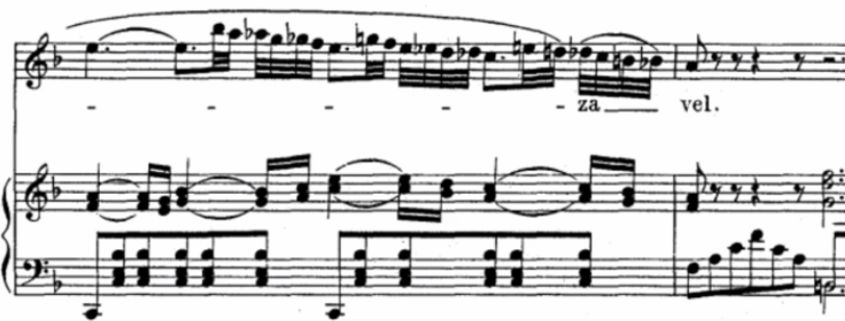
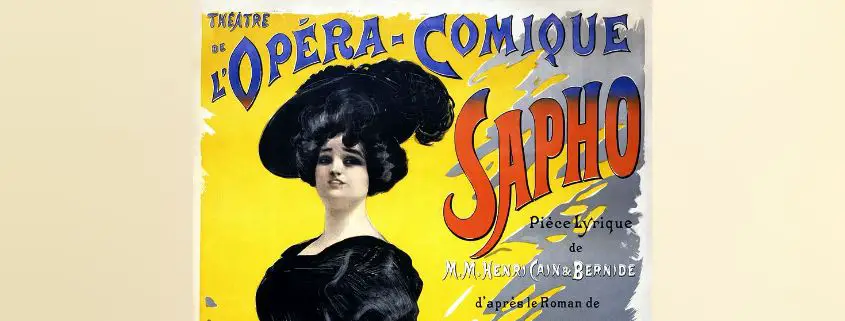
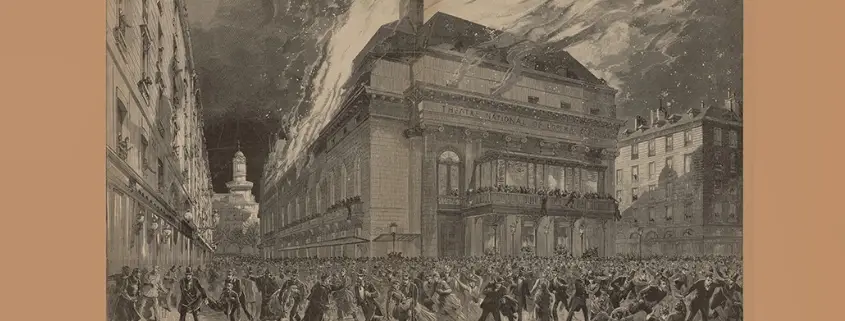

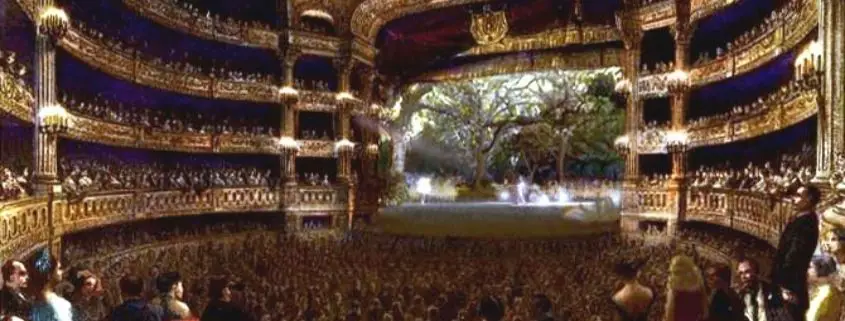
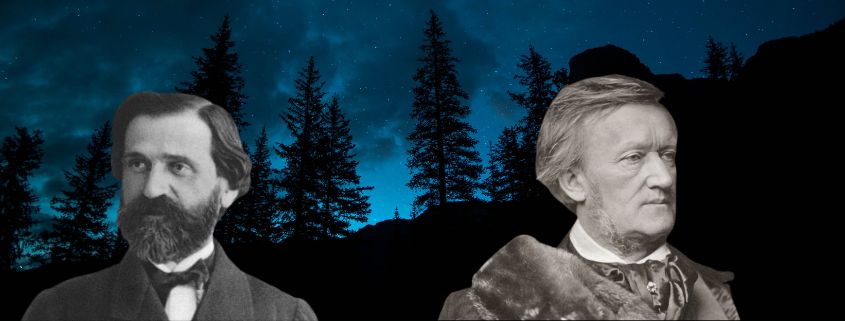
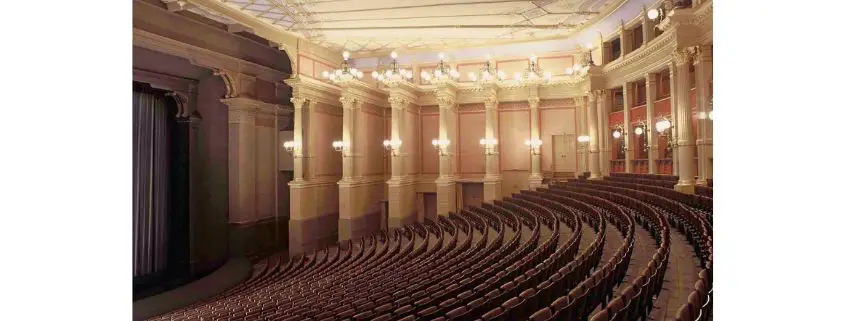
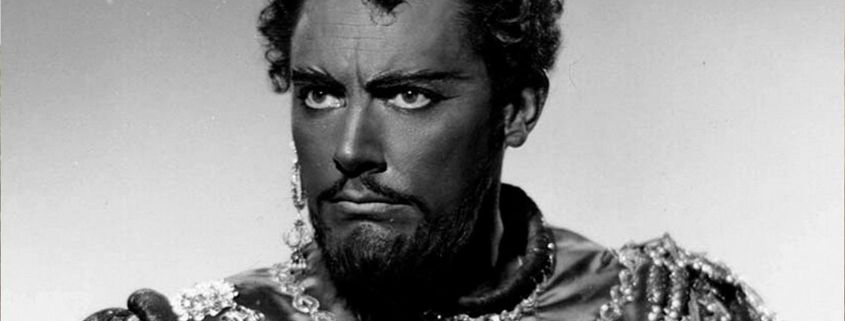
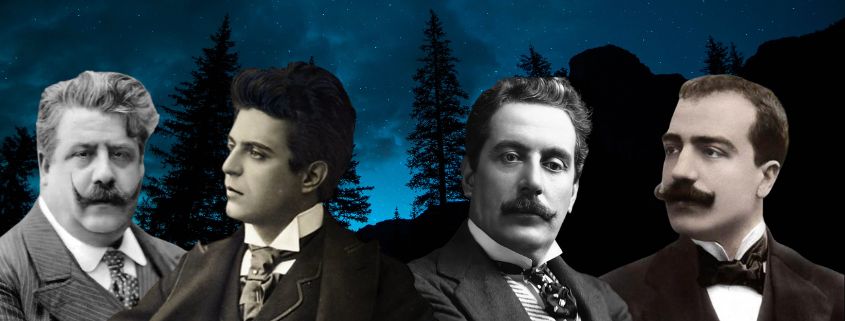
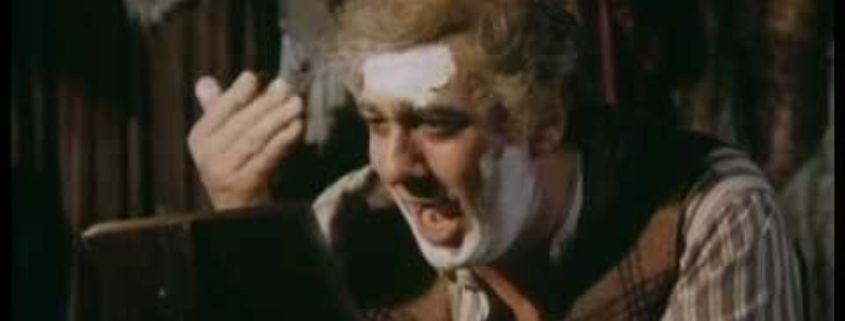
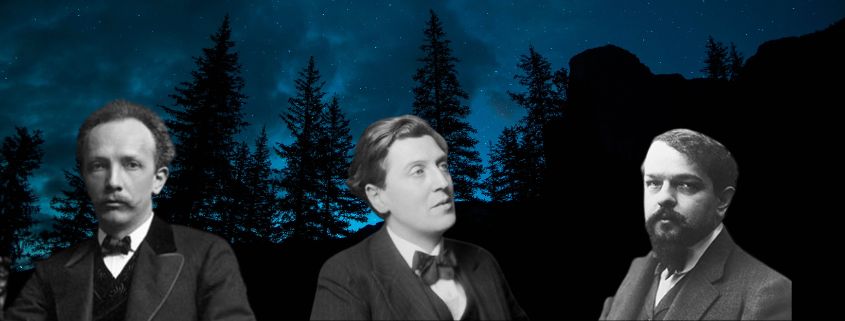
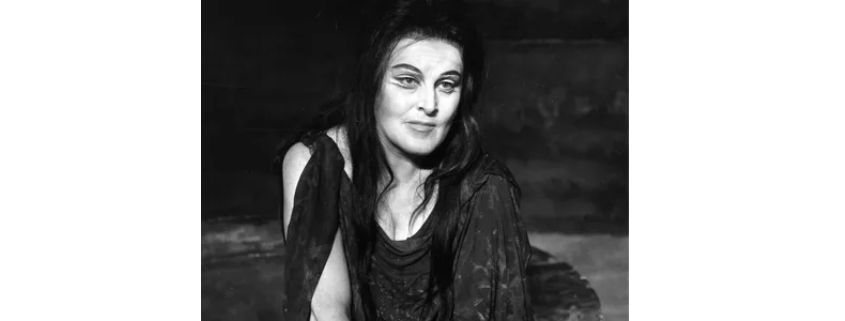


Leave a Reply
Want to join the discussion?Feel free to contribute!